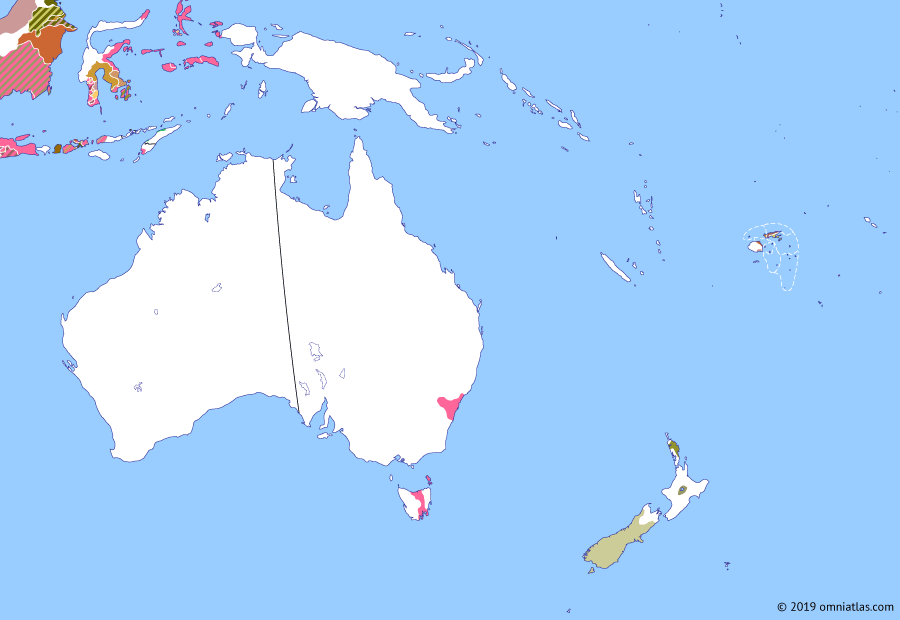Australasia 1815: Settling the Australian interior

7 May 1815
7 May 1815
Settling the Australian interior
26 Jan 1788 First Fleet
28 Apr 1789 Mutiny on the Bounty
7 Feb 1794 Australasia and the French Revolution
23 Jul 1801 Napoleonic France in Australasia
17 Oct 1803 Expanding from New South Wales
26 Jan 1808 Rum Rebellion
18 Feb 1811 Interregnum in the Dutch East Indies
7 May 1815 Settling the Australian interior
29 Feb 1820 Australasia after the Napoleonic Wars
3 Dec 1825 Colony of Van Diemen’s Land
18 Jun 1829 Swan River Colony
1 Jun 1832 Musket Wars
28 Dec 1836 Province of South Australia
6 Feb 1840 Treaty of Waitangi
16 Nov 1840 Colony of New Zealand
17 Feb 1846 Colony of North Australia
30 Aug 1849 Settlement of the South Island
1 Jul 1851 Colony of Victoria
3 Dec 1854 Eureka Rebellion
1 Sep 1855 Tongan Intervention in Fiji
6 Jun 1859 Colony of Queensland
Until the 1810s all British attempts to penetrate the interior of Australia by crossing the Blue Mountains which surrounded Sydney failed, severely limiting available farmland in New South Wales and forcing the young colony to rely on food imports. In 1813 a route was finally found across the mountains, allowing for the establishment of Bathurst—the first inland town in Australia—two years later. With the opening up of the interior, the settler population began expanding rapidly, much to the detriment of the Aboriginal inhabitants of the continent.